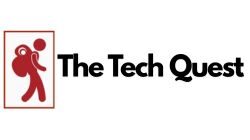TimeWarp TaskUs: Time Management Solution To Enhance Work Productivity

A Necessity to Stand Out and Stay Ahead In this fast-paced digital world, businesses require innovative solutions to stay competitive. Timewarp TaskUs is one of these innovative solutions, driving the transformation of business process outsourcing (BPO) through the combined power of automation, artificial intelligence (AI), and a unique work culture.
In this article, we explain how Timewarp TaskUs is innovating the new future of work by changing the corporate landscape of efficiency, productivity, and employee experience.
What IsTimeWarp TaskUs?
TimeWarp is the proprietary technology of TaskUs, a global BPO company. To change how services handle their customer service duties, TimeWarp TaskUs is a new solution that uses artificial intelligence (AI) and machine learning (ML).
What Does The TimeWarp TaskUs Provide?
It gives businesses intelligence tools that help them keep an eye on important performance indicators and make operational improvements so they can provide excellent service and a positive customer experience.
TimeWarp TaskUs: The Computer Science Behind the Magic
TimeWarpTaskUs powers customer service automation with artificial intelligence that integrates machine learning and a data processing analysis system.
1. During These Upgrades, Several Best Practices Are Followed, including:
- Specialized Insister TimeWarp TaskUs users can keep track of things in real time, which lets them keep a close eye on all of their interactions with customers.
- Monitoring the support process in real time gives customer service teams useful information that they can use across the whole service continuum.
- TimeWarp looks at customer service interactions between questions and answers to find out what makes the customer’s support experience different, as well as common patterns and operational problems.
- Thanks to a real-time monitoring system, customer support managers get excellent performance data that helps them make instant improvements.
- The system automatically sends cases to senior agents for assistance when an agent is late or has a difficult task.
2. AI-Powered Automation
- AI Data Components TaskUs is using AI to capture the cogwheels in their customer support operations.
- TimeWarp TaskUs employs AI to perform three significant service optimizations.
- Automated chatbots that can answer common questions and software that can read emotions and make suggestions based on past data.
- Automation powered by AI cuts down on response times and ensures accurate analysis of solutions to solve customer problems quickly and effectively.
- AI systems improve their performance by learning from previous conversations. This means that customer service operations are constantly changing.
- Automation frees up agents to work on more difficult tasks, which lets them give better customer service.
3. Personalized Customer Experience
- The platform uses machine learning capabilities that shape personalized customer journeys.
- With TimeWarp TaskUs, the system looks at all of your customers’ past data and behaviors to create personalized interactions for each one.
- Customers are happier when they feel like their specific needs and requests are being met because they feel like they are being heard and understood.
- If a customer has asked about a product feature before, TimeWarp lets the agent know by showing a flag. This way, the agent could help keep the customer’s history intact for the current interaction.
- Customers and brands benefit from such personalized interactions, which ensure greater satisfaction and foster deeper loyalty by making customers feel heard and valued.
4. Improved Workforce Management
- One of the key elements of TimeWarp TaskUs is its optimized workforce management features.
- The platform tracks both the agent’s work and the interaction between the agent and the customer. Such data lets you get a better idea of how well the whole process is working.
- The system can figure out agents’ behavior metrics, like how long it takes to complete tasks, how quickly cases are resolved, and how customers feel about the service.
- As a result, the collected data helps companies find great agents, assist underperforming employees, and plan program launches perfectly.
- Workforce optimization ensures that organizations deploy the right number of agents at every shift to keep customer service operations running smoothly and productively.
5. Scalability
- At the TimeWarp TaskUs, we have the scalability that makes it an ideal solution for businesses whose sizes differ.
- Your firm covers the development process, and TimeWarp adapts to take care of expanding customer contact levels.
- TimeWarp scales seamlessly from small companies with new market use cases all the way to enterprise companies answering millions of customer queries.
- TaskUs offers an alternative: with TimeWarp TaskUs, you can scale customer service to excellence during growth periods without the traditional investments in new hires or infrastructure.
Businesses can keep focusing on their main tasks while TimeWarp does its best to improve their customer service thanks to its seamless scalability.
Challenges Faced By Timewarp TaskUs Time Management Tool
While Timewarp TaskUs offers numerous advantages, it also presents certain challenges.
- Costs of Integration Upfront: For businesses to use Timewarp TaskUs, they need to buy new infrastructure.
- Training and Adaptation: We must train employees to effectively adapt to and work with AI-powered tools.
- Cybersecurity Risks: Overall, Timewarp TaskUs has favorable prospects for the future. transition to cloud-based solutions.
All in all, favorable future prospects for Timewarp TaskUs. However, clearly, with the improvements in innovation comes the use of even more advanced services from AI and machine learning, as well as information analytics.
Conclusion
All this data lets you change time, even in virtual reality. People who are responsible for tasks that fall under this model will be more productive, and businesses can expect lower costs and better experiences for their customers. Timewarp TaskUs will play a pivotal role in shaping the future of work, not only in terms of its appearance but also in its digital transformation as time and work evolve.
